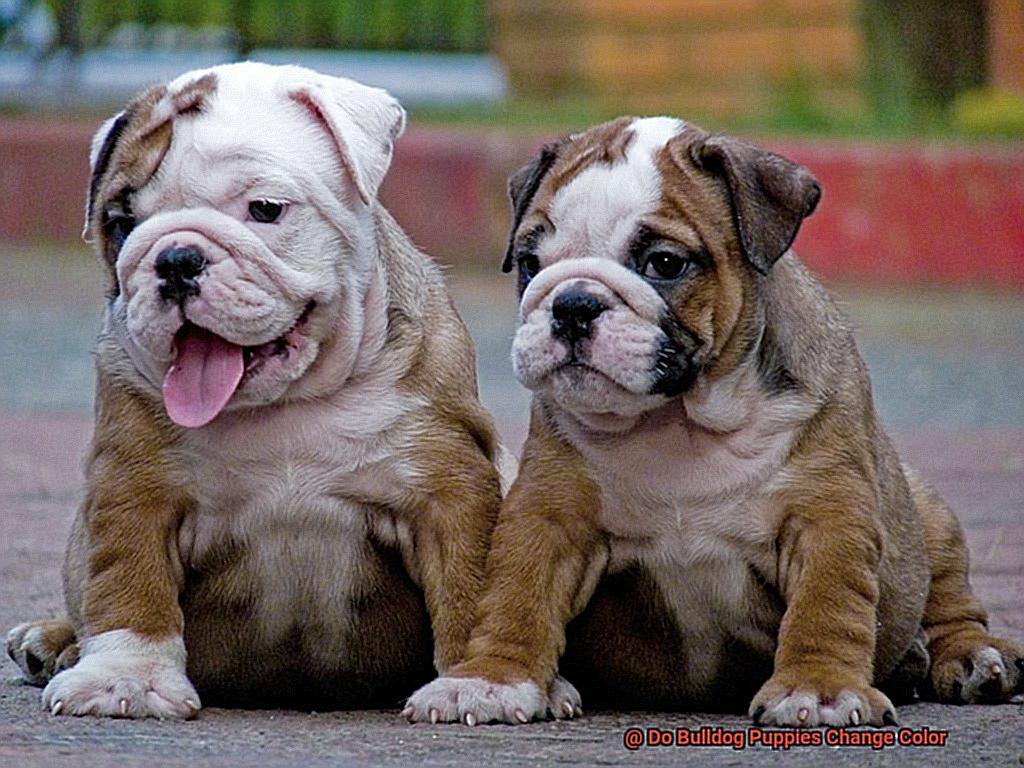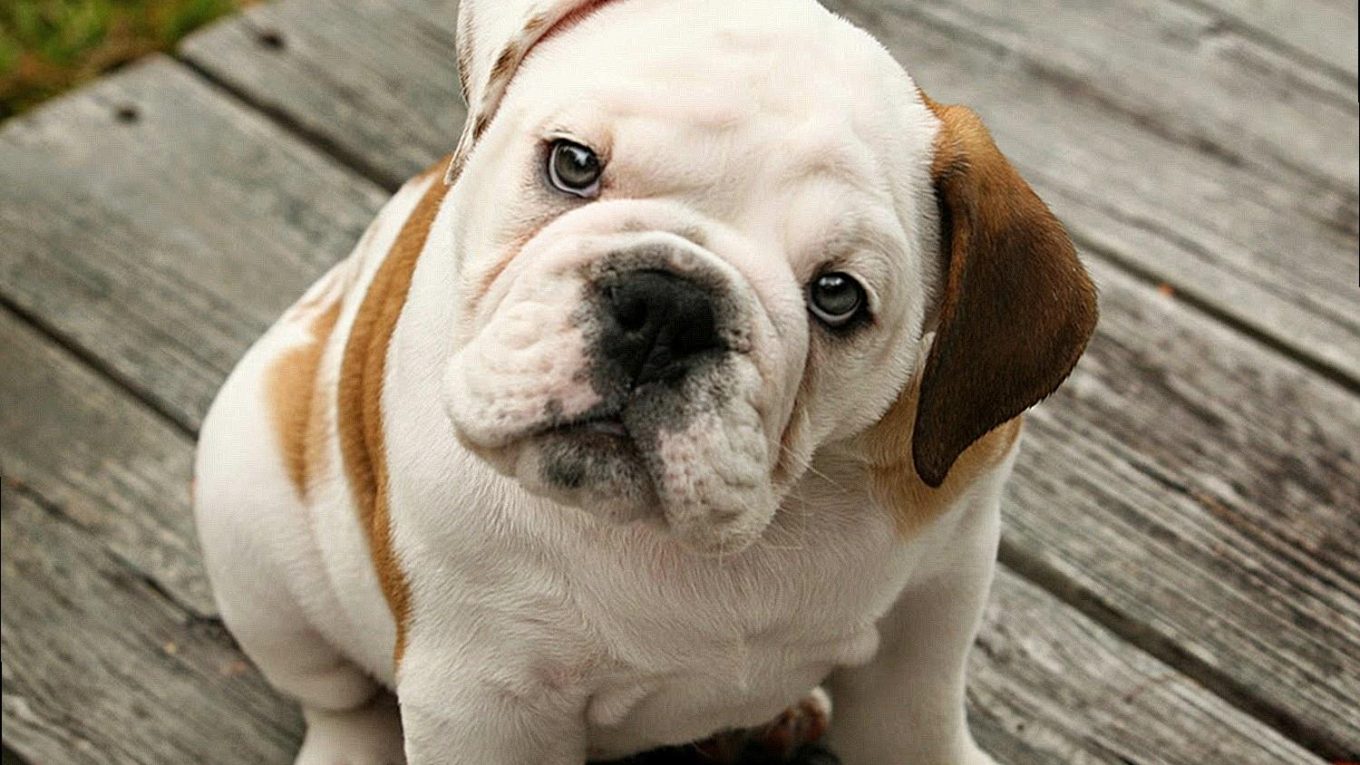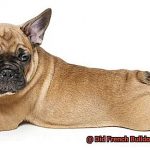Do Bulldog Puppies Change Color?
Ever wondered if these adorable pups change their coat color as they grow? Well, hold onto your hats because these little wonders possess a magical ability to transform their coats, leaving us in awe with each passing day.
In this eye-opening blog post, we’re here to debunk the myths and reveal the truth about bulldog puppies’ color transformation. From their initial appearance to the big reveal, we’ll shed light on the science behind this mesmerizing journey. Whether you’re dreaming of owning a bulldog, a curious enthusiast, or simply fascinated by the captivating world of canine evolution, get ready for answers that will spark your curiosity.
Join us as we embark on this delightful adventure and uncover the secrets behind bulldog puppies’ changing colors. We’ll dive into the factors that influence their coat transformation and witness the stunning results that await these lovable creatures. Brace yourself for an ever-evolving beauty that will leave you spellbound.
What Causes the Color Change in Bulldog Puppies?
Contents
- 1 What Causes the Color Change in Bulldog Puppies?
- 2 When Does the Color Change in Bulldog Puppies Occur?
- 3 What Final Colors Can a Bulldog Have?
- 4 Do All Bulldog Puppies Experience a Significant Color Change?
- 5 How Are Genetics Involved in the Color Change Process?
- 6 Can Environmental Factors Affect the Color Change Process?
- 7 Is The Color Change in Bulldog Puppies Normal and Natural?
- 8 Tips for Owners of Bulldogs Experiencing a Color Change
- 9 Conclusion
This natural process is influenced by genetics and can lead to a stunning transformation in their coat color. In this blog post, we’ll delve into the causes of this color change, providing insights based on research and personal experiences.
The Role of Genetics:
One of the main factors behind the color change in bulldog puppies is their genetic makeup. The presence of a gene called the “K locus” or “Dominant Black” gene plays a crucial role. This gene determines whether the puppy will be black or another color. Bulldogs can come in various colors such as fawn, brindle, white, pied, and black. The K locus gene interacts with other genes responsible for producing different coat colors, resulting in unique patterns and shades.
Gradual and Beautiful Transformation:
The color change typically begins around 6 to 8 weeks of age and continues until the puppy reaches adulthood at around 1 to 2 years old. This transformation is a gradual process, observed as patches or streaks on the puppy’s coat. Different hair follicles produce different pigments, so as new hairs grow, they may have a different color than the previous ones. This gives rise to an enchanting mosaic of colors on their fur.
Hormones and Puberty:
As bulldog puppies mature, hormonal changes during puberty also contribute to their color change. These hormones stimulate the production of different pigments, leading to alterations in coat color. This hormonal influence can be particularly noticeable in brindle-patterned puppies, where the stripes may become more defined and pronounced over time.
Embracing the Natural Beauty:
It’s important to remember that the color changes in bulldog puppies are entirely natural and not indicative of any health issues or concerns. Each puppy’s unique genetic makeup and environmental influences contribute to their individual color transformation. Embrace the beauty of this process, as it adds to the charm and uniqueness of your furry friend.
When Does the Color Change in Bulldog Puppies Occur?
It’s like watching a magic show unfold right before your eyes. But when does this enchanting color change actually happen? Well, my fellow French Bulldog enthusiasts, let’s dive into the details and uncover the secrets of this captivating transformation.
The Journey Begins: Weeks 4-6
Around the time your bulldog puppy hits the 4-6 week mark, that’s when the color party starts. It’s during this period that you may start noticing subtle shifts in their coat color. From light shades of white, cream, or fawn, their fur begins to awaken and take on new hues.
Genetics: The Painter Behind the Scenes
Just like a talented artist with a trusty paintbrush, genetics play a significant role in determining the potential colors and patterns your bulldog pup can develop. The genes inherited from their parents act as the guiding hand, creating a unique masterpiece on their fur canvas.
Hormones: Mixing Colors Like a Pro
As your little pup grows older, hormonal changes kick in and add a touch of magic to the color palette. These hormones can influence the pigmentation of their coat, causing it to darken or lighten as they mature. It’s like watching Mother Nature herself blend colors effortlessly to create a stunning visual display.
Environmental Factors: Shaping the Artwork
While genetics and hormones lay the foundation for the color change, environmental factors also play a role in shaping the final artwork. Sunlight exposure and diet can influence the intensity and shade of the coat color. So make sure your furry friend has plenty of healthy food and some sun-soaking time to enhance their natural beauty.
Embrace the Journey
Remember, not all bulldog puppies undergo a dramatic color change. Some may retain their initial coat color throughout their lives, while others may experience only subtle shifts. But whether your little one undergoes a drastic transformation or remains steadfast in their original hues, it’s the journey itself that truly matters.
So sit back, grab some popcorn, and enjoy the show as your bulldog pup blossoms into their own vibrant masterpiece. And always remember, the real focus should be on their health and well-being rather than the color of their coat. After all, a happy and healthy bulldog is always the most beautiful work of art.
What Final Colors Can a Bulldog Have?
When it comes to the final colors of a Bulldog, there is a delightful array of possibilities. Bulldogs can come in a variety of colors, each with its own unique charm. Let’s dive into the world of Bulldog colors and explore the options that are available.
Brindle: The Striking Stripes
One of the most common colors seen in Bulldogs is brindle. This captivating color is a mixture of dark and light hairs that create a striped or mottled appearance. Brindle Bulldogs can have a range of shades, from light to dark, and their striking stripes make them stand out in a crowd.
Fawn: A Golden Beauty

Another popular color in Bulldogs is fawn. This warm and inviting color ranges from a light tan to a deeper reddish-gold shade. Fawn Bulldogs exude elegance and charm, and their golden coats are truly a sight to behold.
White: A Pure Delight
White Bulldogs are also recognized by the American Kennel Club (AKC). These pure white beauties have a pristine appearance that is sure to turn heads. However, it’s important to note that all-white Bulldogs can be more prone to certain health issues, such as deafness and skin problems.
Red: Solid and Striking
For those who prefer a solid color, red Bulldogs are an excellent choice. These bold and vibrant dogs have a solid reddish coloration without any other markings or patterns. Red Bulldogs make a strong statement wherever they go.
Piebald: Patches of Perfection
If you’re looking for a Bulldog with a bit of pizzazz, consider the piebald variety. Piebald Bulldogs have a white base coat with patches of another color, such as brindle or fawn. These patches can be of varying sizes and shapes, creating a unique and eye-catching appearance.
Variations and Combinations
In addition to the standard colors, Bulldogs can also have variations or combinations of these colors. For example, some Bulldogs may have brindle and white markings, or fawn with a black mask and white markings. These unique combinations add even more personality and charm to these already delightful dogs.
Color Changes and Genetic Influences
It’s important to note that the final color of a Bulldog may not be apparent at birth. Some puppies may undergo color changes as they mature, especially during their first year. These color changes are primarily due to their genetic makeup and the interaction of different genes responsible for coat color. The presence of certain genes can influence the expression of coat color in Bulldog puppies, such as the “K” gene, which affects the intensity or darkness of the coat color.
Do All Bulldog Puppies Experience a Significant Color Change?
Bulldog puppies are undoubtedly one of the cutest creatures on this planet. With their adorable wrinkles and distinctive appearance, it’s hard not to fall in love with them. But have you ever wondered if their coat color changes as they grow? Well, the answer is not as straightforward as you might think.
Factors Influencing Color Changes
- Genetics: One of the primary factors that determine whether a bulldog puppy will experience a significant color change is genetics. Bulldogs, like many other dog breeds, carry different genes responsible for coat color. The interaction of these genes can result in various coat colors and patterns.
- Breed Type: Different bulldog breeds may exhibit different levels of color change. For example, French Bulldogs are known for their relatively stable coat colors, while English Bulldogs may undergo more noticeable variations. This difference can be attributed to the genetic makeup of each breed.
- Individual Variations: Just like humans, bulldogs are unique individuals. Some puppies may have a more stable coat color throughout their lives, while others may undergo significant changes. These individual variations can be influenced by a combination of genetic factors and environmental influences.
Types of Color Changes
- Fading: One common color change that bulldog puppies may experience is fading. This occurs when the puppy’s coat lightens or becomes diluted over time. Fading is more prominent in certain coat colors, such as brindle or red, compared to other colors like black or white. The fading process usually begins around three to six months of age and continues until the puppy reaches adulthood.
- Recessive Genes: Another factor that can contribute to a color change in bulldog puppies is the presence of recessive genes. These genes may become more apparent as the puppy grows older, resulting in a shift in coat color.
- Environmental Factors: It’s essential to consider the impact of environmental factors on a bulldog puppy’s coat color. Exposure to sunlight, certain medications, or even changes in diet can affect the pigmentation of their coat.
Consulting Reputable Sources
To better understand whether a bulldog puppy will experience a significant color change, it is recommended to consult with a reputable breeder or veterinarian who has experience with the breed. They can provide valuable insights into the genetic background of the puppy and predict any potential color changes.
How Are Genetics Involved in the Color Change Process?
In this blog post, we’ll explore the fascinating world of genetics and how they contribute to the captivating color change process in bulldog puppies.
The Role of Genetics:
Genetics is the key player when it comes to determining a bulldog puppy’s coat color. The combination of genes inherited from both parents determines the pigmentation and patterns that will emerge in the puppy’s fur. Let’s delve into some specific genes involved in this genetic masterpiece.
Melanocortin 1 Receptor (MC1R) Gene:
The MC1R gene acts as a conductor, controlling the production and distribution of melanin—the pigment responsible for coat color. Variations in this gene can result in a range of colors, including fawn, brindle, pied, and solid colors.
Agouti Signaling Protein (ASIP) Gene:
The ASIP gene determines whether a bulldog will have a solid coat color or exhibit patterns such as brindle. It regulates the distribution of eumelanin (black) and phaeomelanin (yellow/red), creating a stunning array of coat color variations.
Coat Color Inheritance:
Understanding coat color inheritance patterns can help predict the potential colors of bulldog puppies. Here are some key points:
- Dominant Colors: Fawn is a dominant color in bulldogs. If a puppy inherits one fawn allele from either parent, it will have a fawn coat. However, if both parents carry recessive alleles for another color, such as brindle, some puppies may have brindle coats.
- Shading and Intensity: Additional genes can influence the intensity and shading of a bulldog’s coat color. The dilution gene (D locus) can create shades like blue or lilac, while the merle gene produces a marbled or dappled pattern.
Coat Color Changes:
Bulldog puppies may undergo color changes as they grow. For example, brindle coats may become more pronounced as the puppy’s fur develops. Sun exposure and aging can also subtly alter a bulldog’s coat color over time.
Can Environmental Factors Affect the Color Change Process?
In this post, we will explore the impact of sunlight exposure, temperature variations, diet, stress, and grooming practices on the color change process of bulldog puppies.
Sunlight Exposure:
Sunlight plays a significant role in the color change process of bulldog puppies. The ultraviolet (UV) rays present in sunlight can cause the hair pigments to fade or lighten over time. This effect is particularly noticeable in brindle bulldogs, as the dark stripes can be bleached out by prolonged exposure to sunlight.
Temperature Variations:
Bulldogs are known for their sensitivity to extreme temperatures. Excessive heat or cold can affect their coat color. For instance, prolonged exposure to heat can lead to a lightening of the coat or the development of a reddish hue. It’s important to ensure your pup has access to shade and appropriate shelter during extreme weather conditions.
Diet and Nutrition:
A balanced diet rich in essential nutrients is crucial for maintaining a healthy coat in bulldog puppies. Nutritional deficiencies can impact the quality and color of their fur. Additionally, certain food additives or artificial ingredients may trigger allergic reactions, leading to changes in coat color. Consult with your veterinarian to ensure your pup receives a well-rounded diet.
Stress and Anxiety:
Stressful events or environments can disrupt hormonal balance in bulldog puppies, which may result in changes in hair growth and pigmentation. Moving to a new home or early separation from their mother can contribute to stress-induced alterations in coat color. Providing a calm and nurturing environment is essential for your pup’s overall well-being.
Grooming Practices:
Regular grooming, including brushing and bathing, plays a vital role in maintaining a healthy coat for bulldog puppies. Proper techniques and gentle products should be used to prevent hair follicle damage and preserve the natural color of their coat. Consult a professional groomer for advice on suitable grooming practices.
Conclusion:
As we come to the end of this blog post, we hope you’ve gained valuable insights into how environmental factors can impact the color change process of bulldog puppies. Sunlight exposure, temperature variations, diet and nutrition, stress, and grooming practices all play a role in shaping the ever-changing colors of these adorable pups. By understanding and addressing these factors, you can help ensure your French bulldog maintains a vibrant and healthy coat throughout their life.
Is The Color Change in Bulldog Puppies Normal and Natural?
Bulldog puppies are undeniably one of the cutest creatures on this planet. With their wrinkled faces and chubby bodies, they capture our hearts instantly. But did you know that their coats, just like their personalities, undergo a fascinating transformation as they grow? In this blog post, we will explore why the color change in bulldog puppies is completely normal and natural.
Genetics: The Master Painter
Just like a skilled artist, genetics plays a significant role in determining the color of a bulldog puppy’s coat. When two bulldogs mate, they pass down their genetic information to their offspring, including the genes responsible for coat color. This genetic inheritance can result in a wide range of coat colors and patterns, from the classic fawn to the striking brindle.
The Color Symphony Begins
As bulldog puppies are born, their coats may appear lighter or darker than what they will eventually become. This initial coat color is often referred to as their “puppy coat.” Over time, as they mature, their true adult coat color starts to emerge. The transformation can be quite dramatic, with some puppies undergoing a complete metamorphosis in just a few months.
The Role of Pigmentation
Pigmentation is another key player in the color change process. As bulldog puppies grow, their bodies produce more melanin, which is responsible for the pigmentation in their fur. This increase in melanin can darken or intensify their coat color, resulting in a richer and more vibrant appearance.
Coat Length Matters
In addition to genetics and pigmentation, the length of a bulldog puppy’s coat can also influence its changing colors. Bulldogs typically have a short, dense outer coat and a soft undercoat. As they grow, the outer coat may undergo subtle variations in shade or intensity, giving them a different overall look.
A Rainbow of Possibilities
Bulldog puppies come in various coat colors and patterns, making each one a unique work of art. Some may start off with a light fawn coat and develop darker markings as they mature. Others may begin with a brindle pattern and see their stripes become more pronounced. Regardless of the starting point, the color change in bulldog puppies is a natural and beautiful process.
Appreciating Nature’s Artistry
Tips for Owners of Bulldogs Experiencing a Color Change
If you own a French bulldog, you may have noticed that their coat color changes as they grow older. Don’t worry, this is a completely normal process that occurs in bulldogs. In this article, we will explore the fascinating color change process and provide helpful tips for owners to navigate this journey with their furry companions.
Understanding the Color Change:
As bulldogs mature, their coat color can either fade or darken. The fading of the coat is caused by a decrease in melanin production, while darkening occurs due to genetic factors. Remember, these changes are natural and should not cause concern.
Patience is Key:
The color change process takes time. It can range from several months to a few years before your bulldog’s coat settles into its adult shade. Avoid rushing or trying to prevent the color change, as it can be stressful for both you and your dog. Embrace the beauty of their changing colors.
Regular Grooming for Vibrant Coats:
Maintaining a regular grooming routine is crucial during the color change process. Brush your bulldog’s coat regularly to remove dead hair and stimulate oil production, which keeps their coat healthy and shiny.
Nutrition Matters:
A well-balanced diet plays a significant role in maintaining a healthy coat. Ensure your bulldog’s food includes essential nutrients like omega-3 fatty acids, vitamins, and minerals. Consult with your veterinarian to ensure you are providing the right nutrition for your furry friend.
When to Seek Veterinary Advice:
While most color changes are normal, some may indicate underlying health issues. If you notice any drastic or unusual color changes in your bulldog’s coat, consult with your veterinarian for proper diagnosis and treatment if necessary.
Conclusion
Bulldog puppies are known for their adorable wrinkly faces and unique coat colors. But do these colors change as they grow? The answer is yes. Bulldog puppies often undergo a fascinating transformation in their coat color as they mature.
During the first few weeks of life, bulldog puppies may have a completely different color than what they will eventually become. This is because their true coat color hasn’t fully developed yet. It’s like watching a beautiful painting unfold before your eyes.
As bulldog puppies grow older, their coat gradually starts to change. Some may lighten or darken, while others may develop new patterns or markings. It’s an exciting process to witness as these little bundles of joy transform into the stunning bulldogs they were meant to be.
The changing coat colors in bulldog puppies can be attributed to genetics. Bulldogs come in various colors such as fawn, brindle, white, and even rare shades like blue or black. These genetic factors play a role in determining how a puppy’s coat will evolve over time.
Imagine seeing a once plain-looking puppy blossom into a striking adult with vibrant hues and intricate patterns. It’s like nature’s own work of art coming to life right before your eyes.
So if you’re considering getting a bulldog puppy, keep in mind that their appearance may change as they grow. Embrace the journey of watching them transform into the magnificent dogs they are destined to become. It’s truly a remarkable sight that showcases the beauty and uniqueness of each individual bulldog.
In conclusion, bulldog puppies do indeed change color as they mature. From their initial days as adorable little pups with uncertain hues to blossoming into majestic adults with captivating coats, it’s an incredible journey worth witnessing.




